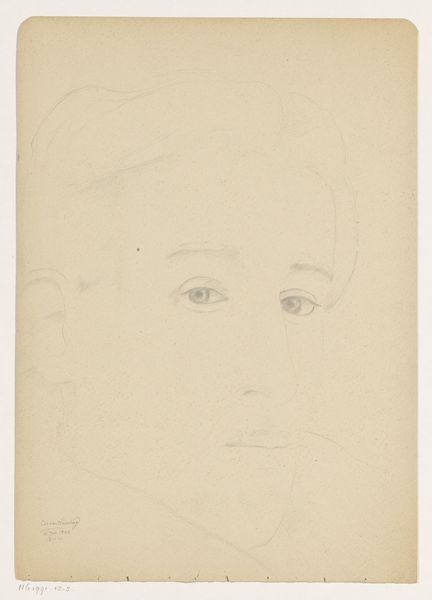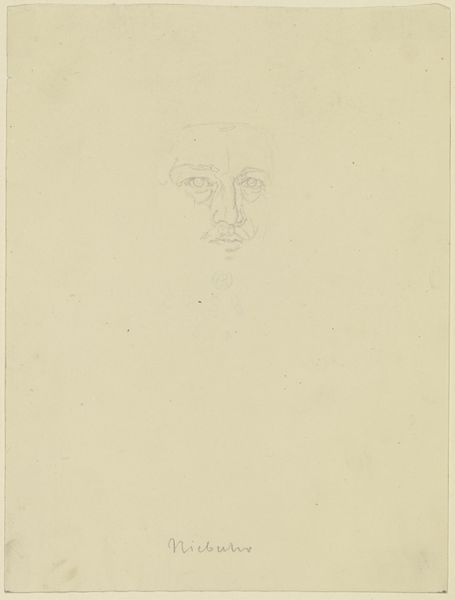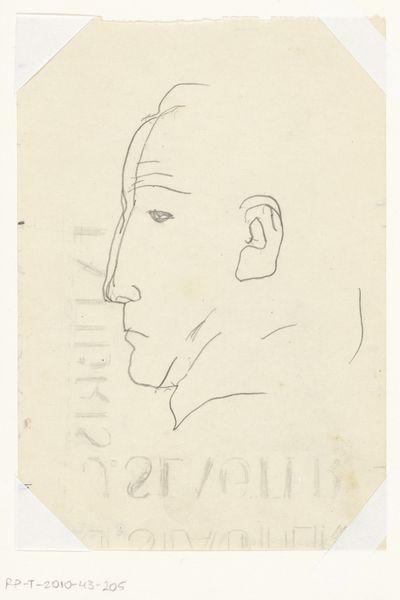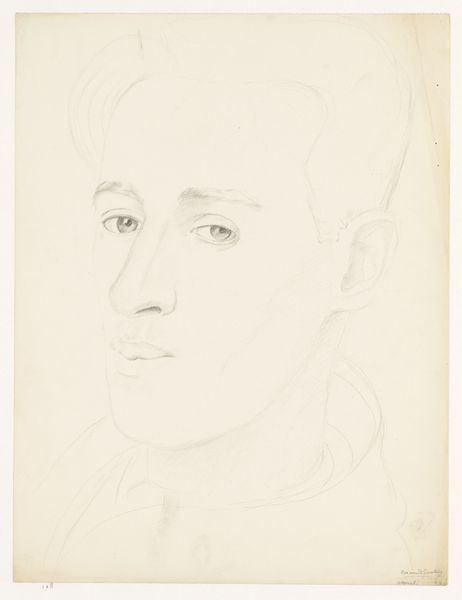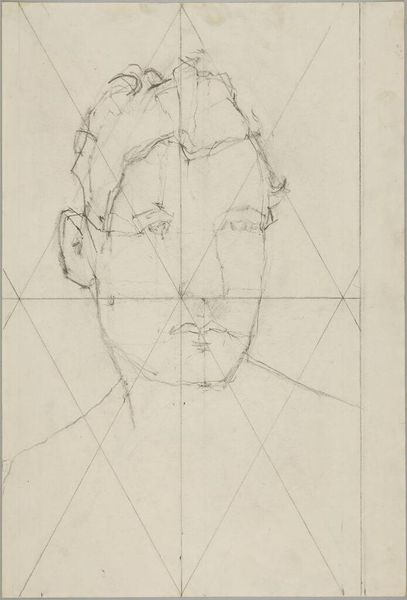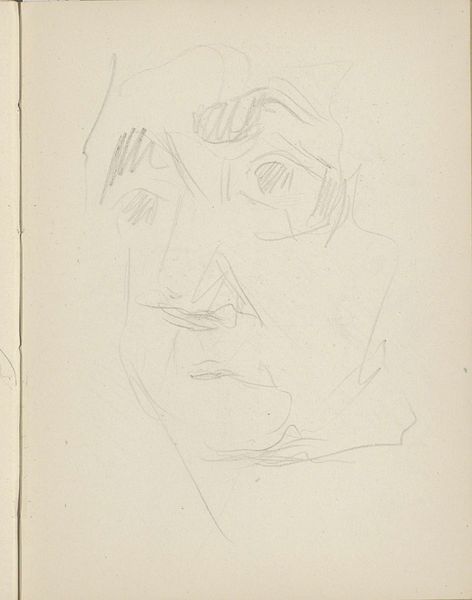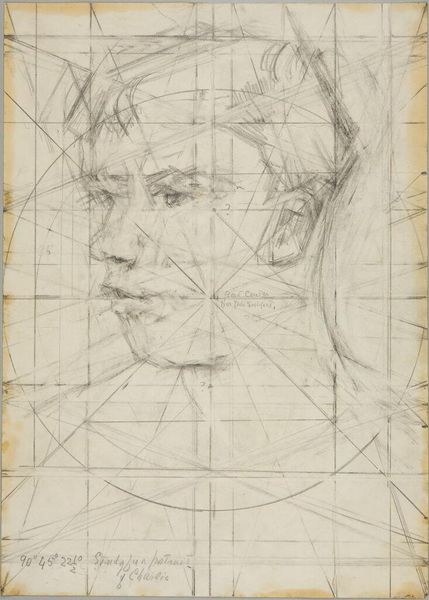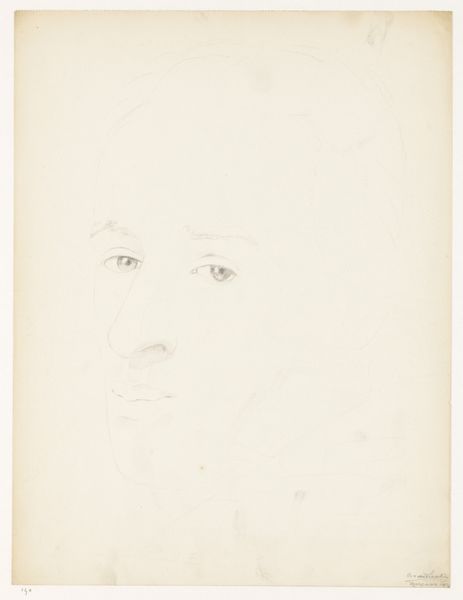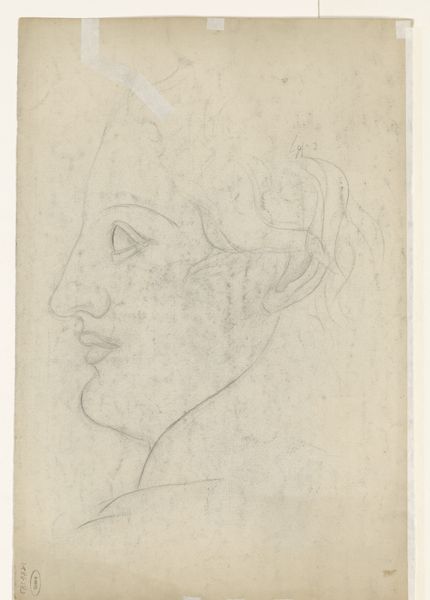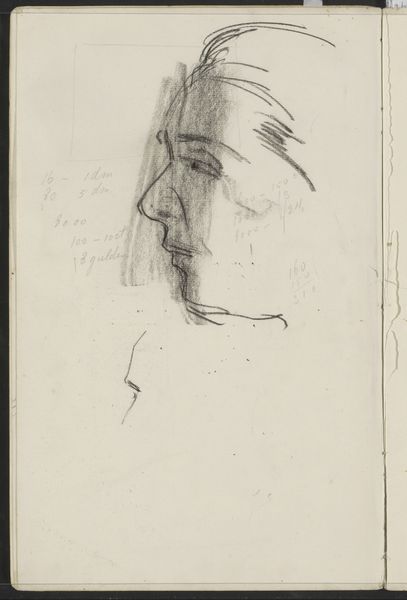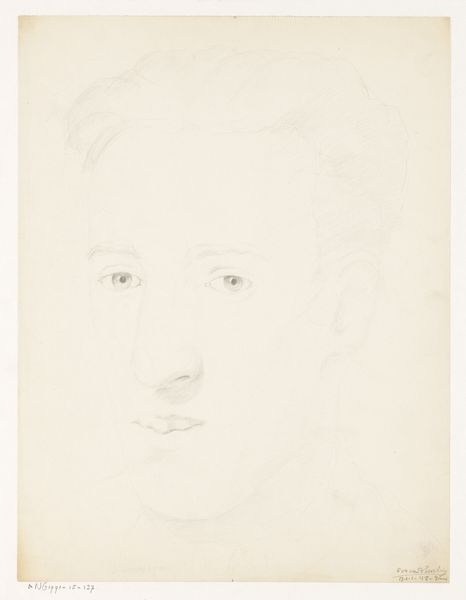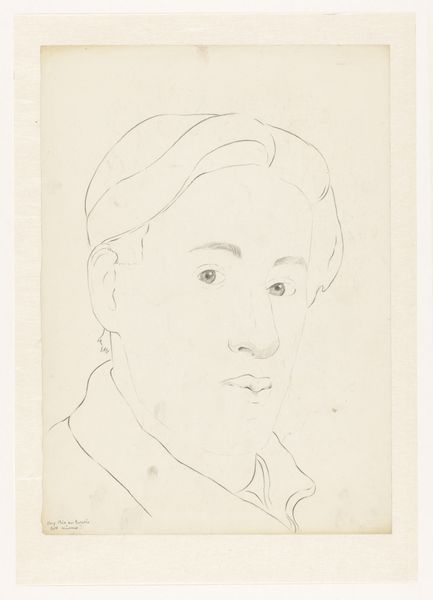
drawing, pencil, graphite
#
portrait
#
drawing
#
geometric
#
pencil
#
graphite
Dimensions: height 327 mm, width 189 mm
Copyright: Rijks Museum: Open Domain
Curator: This is "Studie voor portret Jan Conrad Brandes," a study for a portrait of Jan Conrad Brandes, created in 1777. It’s a drawing done in pencil and graphite. Editor: Immediately, I'm struck by the grid underneath the portrait. It's so methodical. It makes me think about the artist meticulously building the image. There's something inherently cold and calculated about using those very precise guides for portraiture. It’s more like architectural design! Curator: Exactly! This gives insight into the formal artistic training during that era, the reliance on structure. But let's think about Brandes himself; he was a clergyman and scholar of the Dutch East India Company, fascinated with eastern cultures. His portrait was, perhaps, more than just a personal memento; it might have functioned as a kind of public pronouncement. Editor: So, how might that relate back to that grid beneath the image? The portrait style and these structural guides, is the artist reflecting this professional life somehow? Restraining something to control and reflect respect? Is he "imposing order," not only technically in his composition but maybe symbolically, onto a subject steeped in potentially unruly and "exotic" foreign cultures, as he would have understood it? Curator: It's plausible. The tight composition, almost clinical precision, creates a certain…reserved aura around Brandes. The almost unfinished quality allows the grid to peek through, to remind us it's also just a study. There’s a tension there that maybe represents this era. Editor: I feel almost as though it has become more than a "Study", this feels like peering directly into the process. You are there, not seeing the subject through the romantic lens of a finished painting. Just observing raw observation, maybe. What did he think? Was he pleased? Curator: I agree. Perhaps the incompleteness grants an access not otherwise found. The exposed process offers, paradoxically, something raw and immediate about that relationship between artist and subject. Editor: Something beautifully vulnerable about it too. And now when I look I almost wonder how much artifice can still permeate in supposed “authenticity”.
Comments
No comments
Be the first to comment and join the conversation on the ultimate creative platform.
